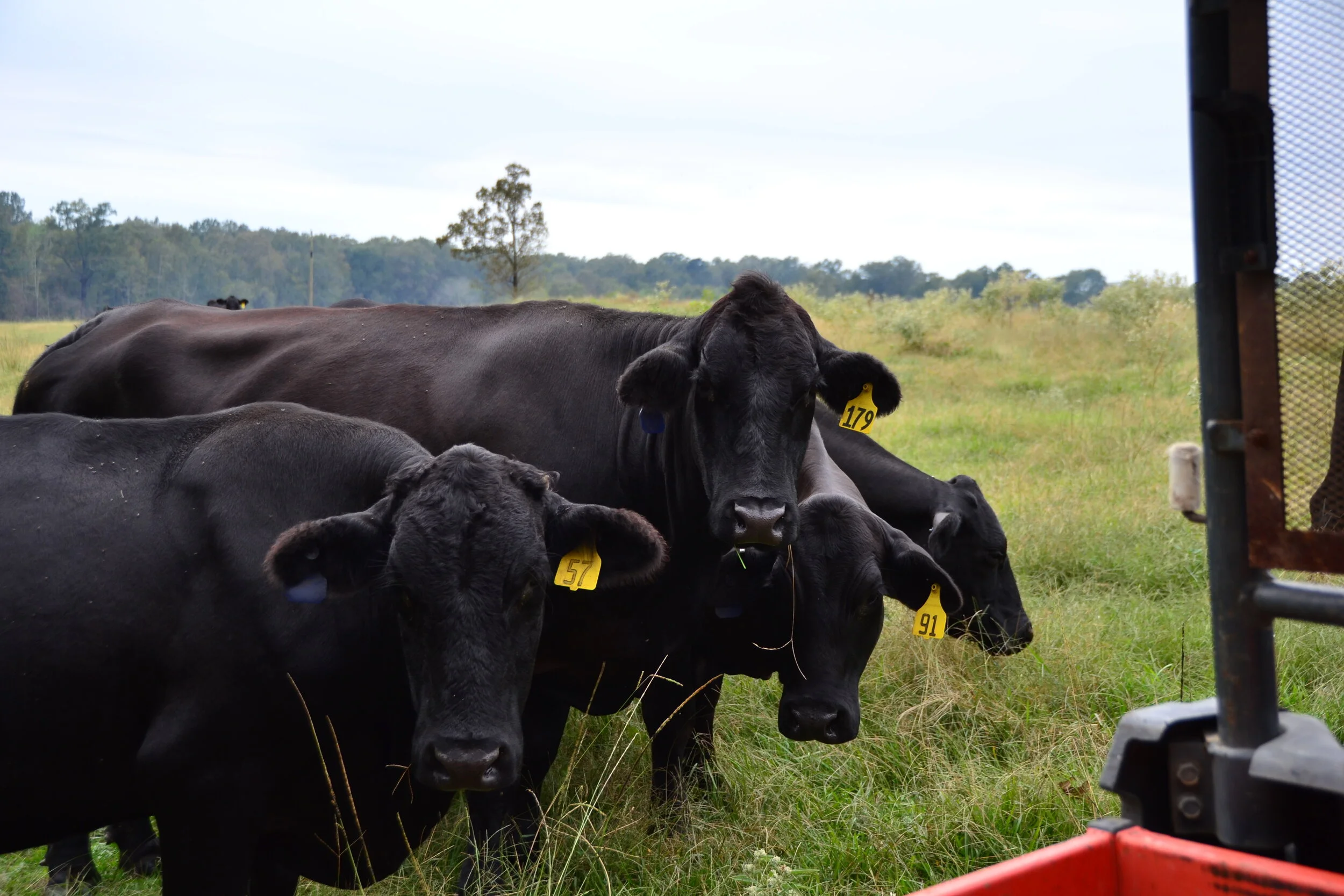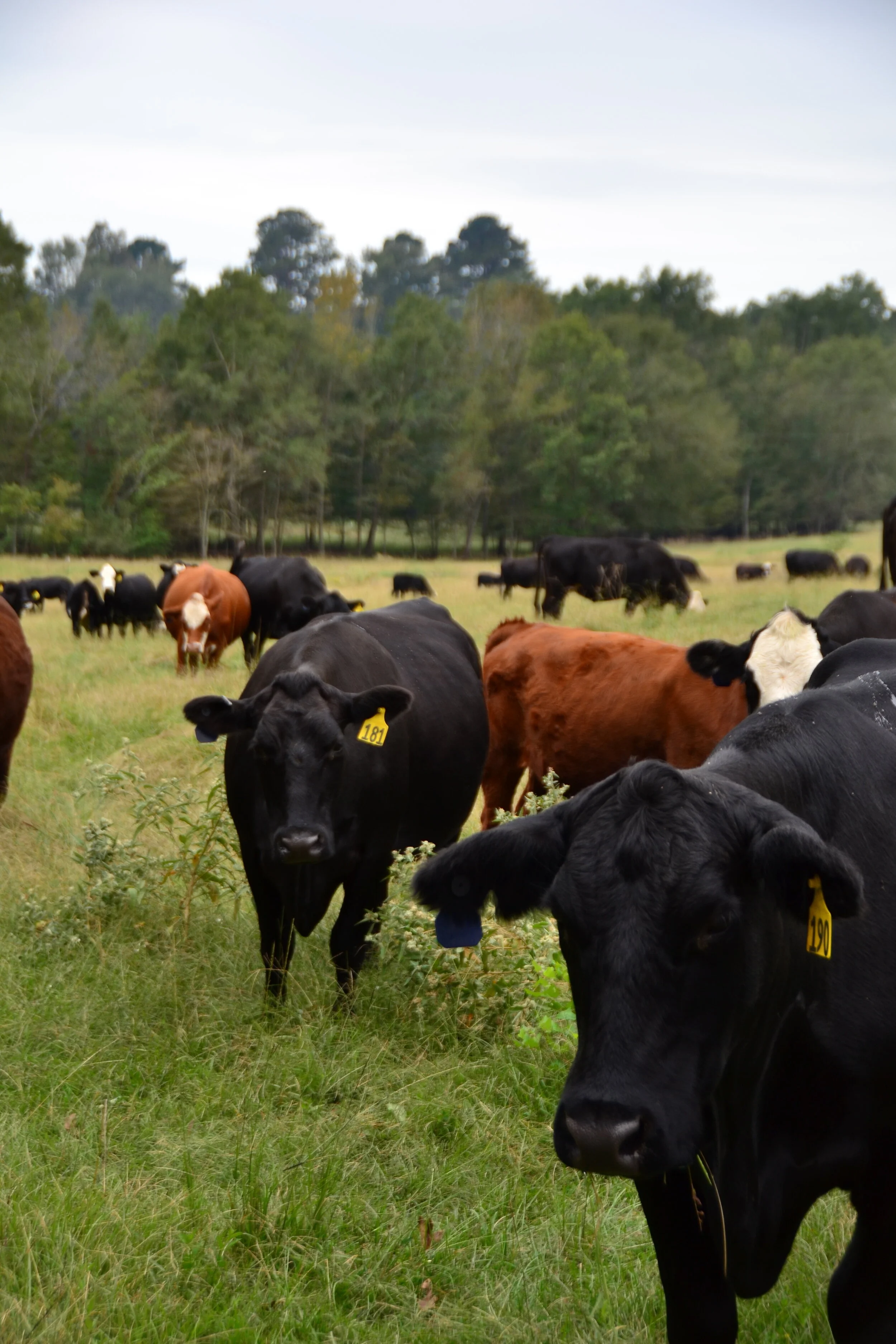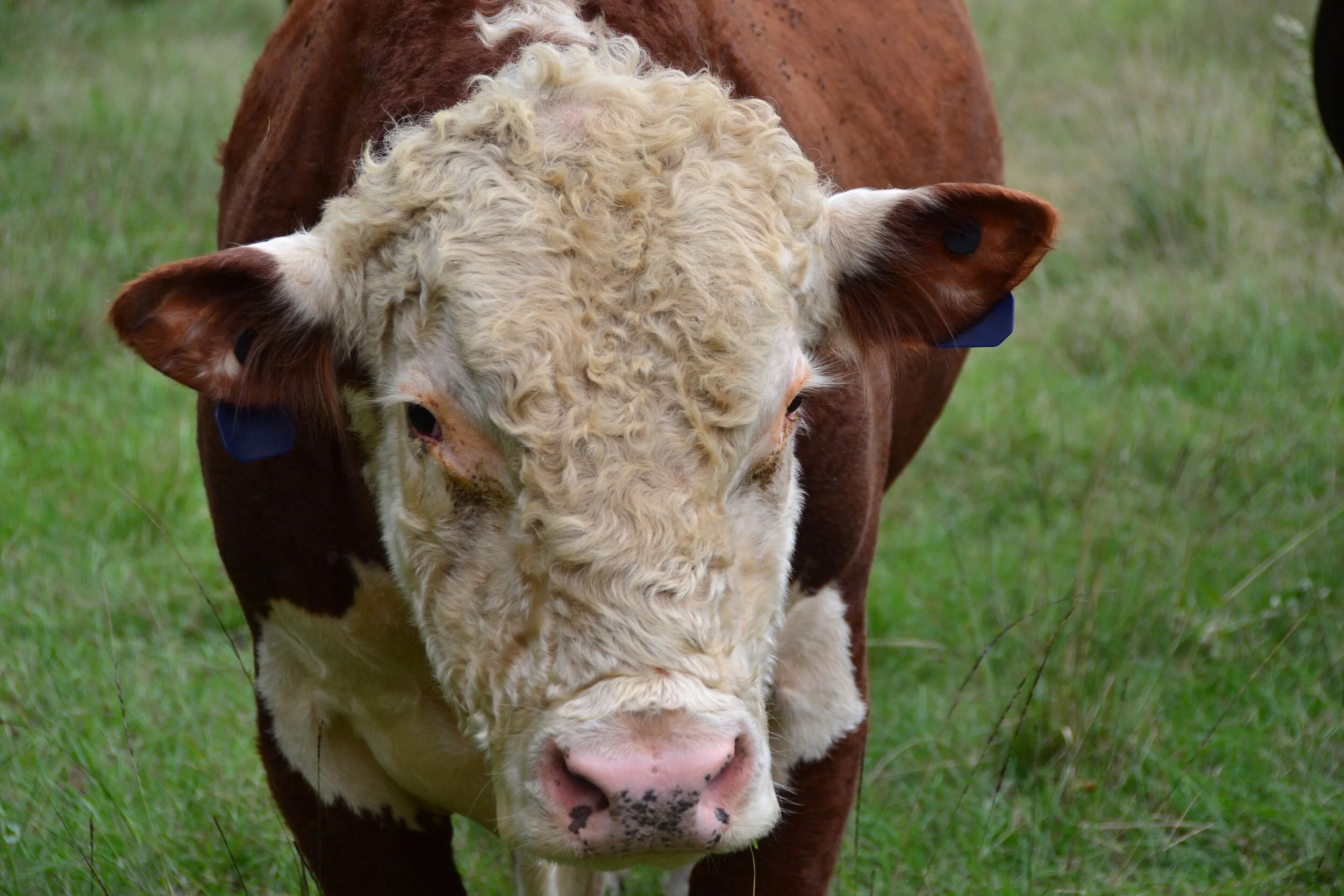Cattle
As of December 2023, our cattle herd of 104 total head consists of Angus/Brangus & Black Baldie (some Red Baldies) crossbred cows, Wagyu bulls, this years calf crop, and the previous years calf crop that are being grain finished for processing.
We have 7 different permanent pastures, 5 stock ponds, 1/2 mile of the mighty Castor Bayou that cuts through the heart of the farm, 80 acres of woods/silvo-pasture, and an artesian water well that flows year round keeping two ponds full. We utilize electric fencing to subdivide the 7 permanent pastures as required to move the cattle onto fresh grass every 1 to 4 days as part of our intensively managed rotational grazing program. Our rotational grazing program has allowed us to cut back on the number of days we feed hay each year, increased the amount of animals we are able to carry on our farm, and helped with parasite & horn flies management since we rarely revisit a pasture within the parasite or horn fly life cycle. We’ve found that electric fencing and rotational grazing are powerful tools when used properly. As the cattle became more and more comfortable with the electric fencing, they became more gentle and move easily and quickly in a low stress environment. Several years ago, moving the cattle took several cowboys on horseback with dogs. If you’ve ever seen or been part of that process, low-stress are not the two words that come to mind. Now, we are able to move the cattle in a few minutes with no screaming or yelling and with no dogs. There’s never a bad time to come out and visit the farm but coming on a day when we’re moving the cattle into a new pasture is hard to beat.
We work hard to minimize hay feeding each year by utilizing rotational grazing and avoiding overstocked conditions. Something we’ve done successfully during the last two severe droughts is pumping fertile water out of our ponds onto our pasture when we see drought conditions on the horizon.
We plant (no-till) about 90 acres of annual rye grass & clover each year to get an early start on the early spring grazing season while others are still feeding hay. Rye grass is premium nutrition for the cattle and is usually ready to graze 6 to 8 weeks ahead of the summer perennials. Clovers are legumes that provide premium nutrition, increase bio diversity, and fix nitrogen in the soil for our summer perennials reducing the need for commercial fertilizers. We start calving in the early spring about the time the rye grass is ready to graze which is optimum for the health of our new calves and the heavy nutritional requirements of the mama cow which peak when the her new calf hits the ground. Since we moved from fall to spring calving 6 years ago, we have not lost a calf to pneumonia which is one of the hazards associated with late fall calving.
We pull soil samples each year and apply lime as required. We have not needed to apply commercial fertilizer in the last couple of years as a result of our regenerative practices which has definitely had a positive impact on our bottom line.
On the subject of hay, we do not cut our own hay. We buy hay and bring it onto our farm to feed to our animals. This is one simple way that we add nutrients and organic matter to our soil. In addition to that, we feed the majority of our hay by unrolling it using a four wheeler and a hay unroller. By unrolling the hay, we are scattering the nutrients from one bale of hay plus the animal urine and manure over a strip about 150 yards long and 15’ wide instead of in a concentrated hay feeding area. Unrolling hay is another powerful tool that can be used to improve soil health and minimize the need for commercial fertilizers. We do not roll out hay when green grass is actively growing to avoid choking it out.. We choose to feed hay in rings when the quality of the hay is substandard. We’ve found that if we put out a linited number of hay bales in rings at one time, that he cattle will eat the hay aggressively because of competition with the other cows. If we unroll the same hay, the cows pick through only the best parts leaving an excessive amount of waste. I think from the comments above you can see that we’re always experimenting and trying to do better.
We are not there yet but are continually seeing improvements in our pastures through rotational grazing. A couple of quick examples to show why we know we’re on the right track: If you turn a herd of grazing animals into a 60 acre pasture that has 20 days of grass to eat, the herd will eat the best grass on day 1 and be forced to eat the worst grass on day 20. Because of this, their body condition will drop continually from day 1 to day 20. If instead, you split that pasture up into 5 smaller pastures using portable electric fencing to be grazed 4 days each, the quality of the grass they eat on days 17-20 will be the same as the quality of the grass they ate days 1-4. This results in much more consistent and improved animal performance & reproduction. In addition, if the cattle are allowed to graze the entire 60 acre pasture with no cross fencing, you will find increased concentrations of manure and urine near the water source and the cattle’s favorite source of shade. By splitting the pasture up into 5 smaller paddocks, the manure and urine are distributed much more evenly putting the nutrients back in the soil where they belong reducing the need for future pasture fertilization.




